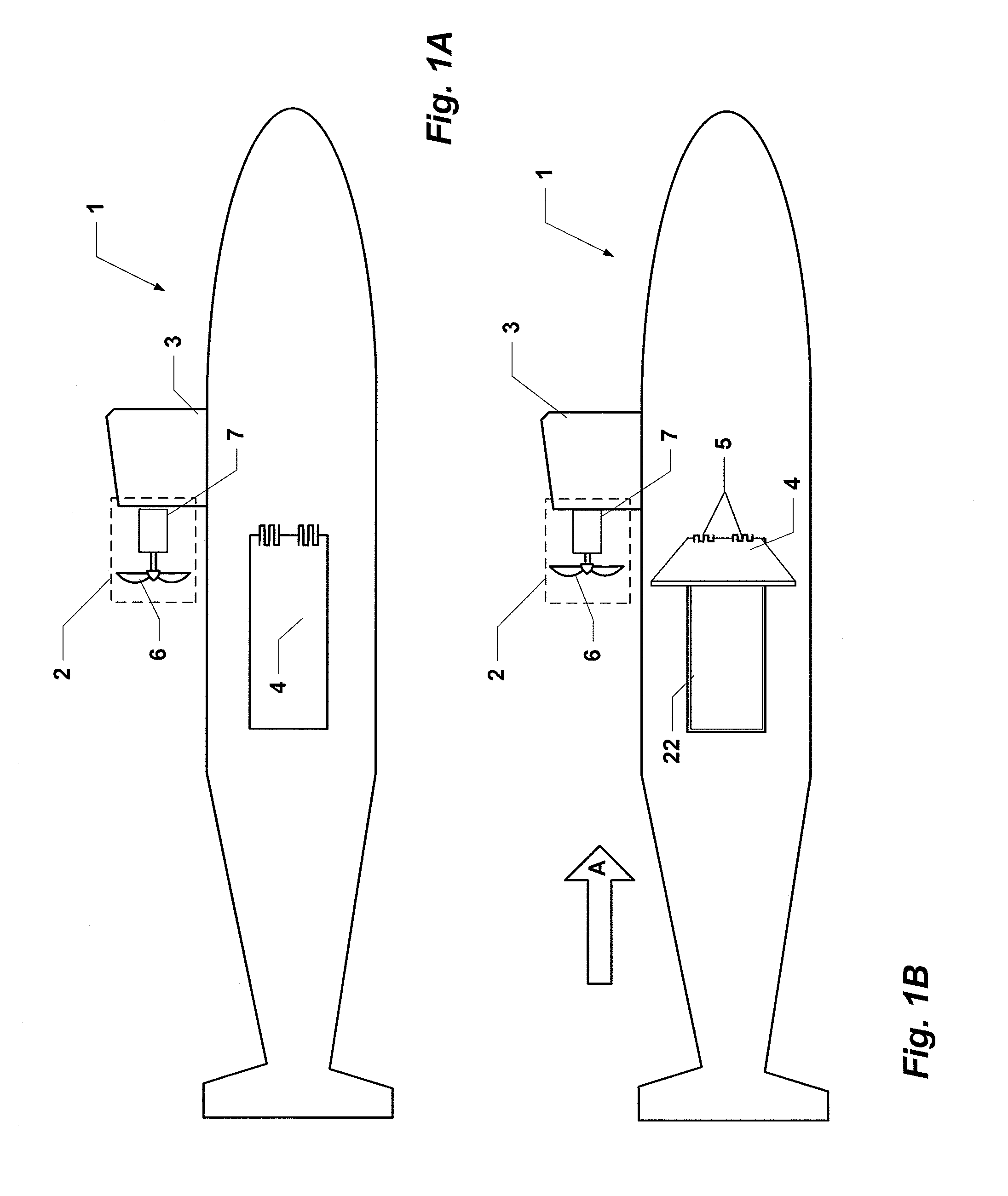Submarine Renewable Energy Generation System Using Ocean Currents
a renewable energy and ocean current technology, applied in the direction of underwater equipment, vessel auxilary drives, special-purpose vessels, etc., can solve the problems of insufficient efficiency of current battery technology to allow the ship, increased risk of detection, and high nois
- Summary
- Abstract
- Description
- Claims
- Application Information
AI Technical Summary
Benefits of technology
Problems solved by technology
Method used
Image
Examples
Embodiment Construction
[0023]The various embodiments of the present invention and their advantages are best understood by referring to FIGS. 1A through 8 of the drawings. The elements of the drawings are not necessarily to scale, emphasis instead being placed upon clearly illustrating the principles of the invention. Throughout the drawings, like numerals are used for like and corresponding parts of the various drawings.
[0024]This invention may be provided in other specific forms and embodiments without departing from the essential characteristics as described herein. The embodiments described above are to be considered in all aspects as illustrative only and not restrictive in any manner. The following claims rather than the foregoing description indicate the scope of the invention.
[0025]FIG. 1A depicts the starboard side of an exemplary submarine 1 having a turbine 2 mounted to the hull on the aft portion of the sail 3. The turbine 2 is comprised of a rotor 6 the rotation of which drives a generator 7. ...
PUM
 Login to View More
Login to View More Abstract
Description
Claims
Application Information
 Login to View More
Login to View More - R&D
- Intellectual Property
- Life Sciences
- Materials
- Tech Scout
- Unparalleled Data Quality
- Higher Quality Content
- 60% Fewer Hallucinations
Browse by: Latest US Patents, China's latest patents, Technical Efficacy Thesaurus, Application Domain, Technology Topic, Popular Technical Reports.
© 2025 PatSnap. All rights reserved.Legal|Privacy policy|Modern Slavery Act Transparency Statement|Sitemap|About US| Contact US: help@patsnap.com



